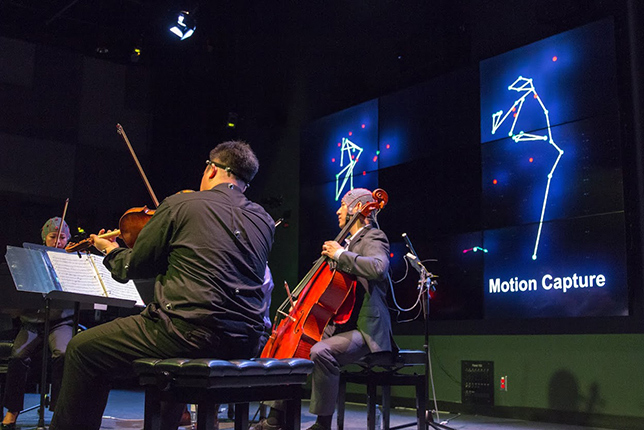At first glance, McMaster University’s LIVELab looks like a typical concert hall with seating for 100 and a performance stage complete with grand piano. But looks are deceiving.
LIVE stands for Large Interactive Virtual Environment. Opened last fall, the $8-million research facility has sensors that can be used on 32 audience members and four musicians to measure the electrical activity in their brains as well as their heart rate, breathing and other physiological changes in response to what’s happening on stage. The lab also features tablets to collect responses from audience members during presentations, plus a motion-capture system with infrared cameras to study how performers move relative to each other, or how audiences move as they listen. Even the grand piano is equipped with electronics to record and study the characteristics of every key stroke.

As well, researchers can alter the acoustics and ambience of the performing hall. “We can make it sound like you’re in a cathedral … or a subway station,” says Laurel Trainor, director of the McMaster Institute for Music and the Mind. Or, “we can add in restaurant noises or create other environments that are very realistic.”
“Every known human culture has music,” notes Dr. Trainor by way of explaining the lab’s research agenda. Music obviously serves “some important social and emotional functions, and we really want to understand what they are.”
A wide variety of groups and companies have shown an interest in the lab. For example, Parkinson’s researchers are interested in using it to study how music affects movement in their patients; a marketing research firm would like to investigate how people react physiologically to various stimuli; and another company would like to use the lab to test hearing aids. The lab can also serve as a recording studio and of course as a performance hall. “Almost everybody that comes through here thinks up a new way they want to use the lab,” says Dr. Trainor.